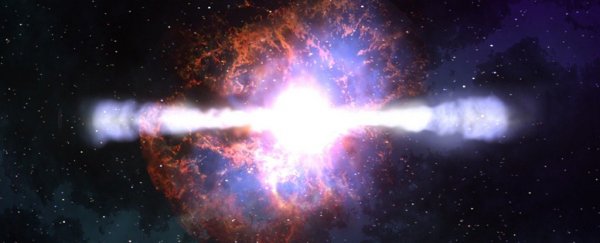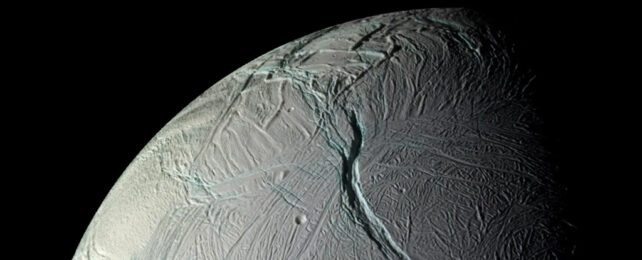 An artist's impression of a supernova explosion, a major source of high-energy cosmic rays. (NASA/GSFC/Dana Berry)
An artist's impression of a supernova explosion, a major source of high-energy cosmic rays. (NASA/GSFC/Dana Berry)
Too much cosmic radiation can sterilize a planet – but a surprising new study has found that under the right circumstances, it could actually make uninhabitable worlds habitable.
Ionizing radiation has enough energy to damage the organic compounds that are fundamental to biology, which for organisms like us can lead to health problems like cancer. Not only does this include ultraviolet light from the Sun and X-rays and gamma rays from further afield, but high-speed particles making up cosmic rays are also notable for blasting away at biochemistry.
Here on Earth, we're protected from the worst of it all by our planet's magnetic field and atmosphere. It's usually assumed that without these kinds of defenses, life wouldn't stand a chance.
Related: NASA May Have Inadvertently Killed Life on Mars, Scientist Says
But the new study suggests that life could not only survive ionizing radiation, but depend on it. The idea is that high-energy particles from space could knock electrons out of molecules in underground water or ice, in a process called radiolysis. Hypothetically, this could produce enough energy to feed microbes even in cold, dark environments.
 Saturn's moon, Enceladus. (NASA/JPL/Space Science Institute)
Saturn's moon, Enceladus. (NASA/JPL/Space Science Institute)The researchers ran simulations of radiolysis at work in key locations in the Solar System to figure out how much energy it could potentially produce. By their calculations, Saturn's moon Enceladus is the cosiest home for aliens, followed by Mars and then Jupiter's moon Europa.
The study has major implications for how common life could be throughout the cosmos.
"This discovery changes the way we think about where life might exist," says Dimitra Atri, astrobiologist at New York University's Abu Dhabi campus.
"Instead of looking only for warm planets with sunlight, we can now consider places that are cold and dark, as long as they have some water beneath the surface and are exposed to cosmic rays. Life might be able to survive in more places than we ever imagined."
The research was published in the International Journal of Astrobiology.

.jpg) 13 hours ago
3
13 hours ago
3
 English (US)
English (US)